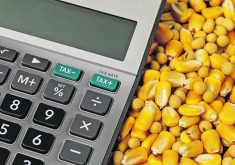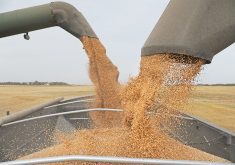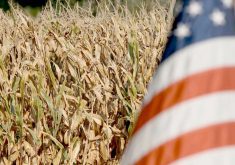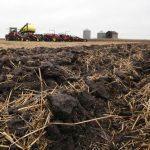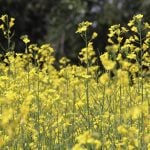Farm revenue and cash income soared in 2021 despite widespread drought and a much-reduced crop.
The picture is much less rosy, however, when crop insurance payments and sold-off crop inventories are excluded from the numbers.
“At the end of the day, yes, there’s more gross money at the farmgate, but less net (from growing crops,)” said Ian Boxall, president of Agricultural Producers Association of Saskatchewan.
Statistics Canada’s 2021 final farm income numbers show realized net farm income rose 49.8 percent, but total net farm income fell about 22 percent. Realized net income includes all cash sales and total net income subtracts declines in inventories. Farmers sold most of their crops at high prices in 2021, but drought-reduced production left on-farm stocks at razor-thin levels going into 2022.
Operating costs jumped 10.5 percent as farm input prices surged.
Crop revenues rose 11.9 percent to $47.3 billion, which follows the 15.2 percent gain in 2020 and a 3.5 percent gain in 2019.
In livestock, hogs brought the biggest year-on-year gains, with a 32.3 percent increase to $6.3 billion, versus cattle sales that rose by 11 percent to $9.2 billion. Chicken sales brought a 15.8 percent increase in value, with overall supply management sales of $12.5 billion.
Both wheat and canola brought major increases in sales, making up 56.6 percent of the overall crop sales increase. Alberta and Manitoba each recorded a 20.8 percent increase in the value of crop sales, while Saskatchewan’s rose 16.8 percent.
Huge crop insurance payments helped push up the prairie farm income number, rising 71.8 percent to $5.9 billion across Canada, following rises in both 2020 and 2019. AgriRecovery added to the program payments number, while dairy farmers were helped by the Dairy Direct Payment Program.
However, livestock insurance programs saw almost no payouts, falling 98.5 percent, as the pandemic slump was replaced by a pandemic shortfall.
Hidden within the aggregate numbers is the on-farm reality. Farms that grew good crops might have had their best year ever. Farms devastated by drought might have seen little benefit from the high prices. Livestock producers who had to liquidate herds were in a radically different position to those who were able to keep producing.
“In those pockets where they had a good year, it would have been a banner year,” acknowledged Boxall, who farms at Tisdale.
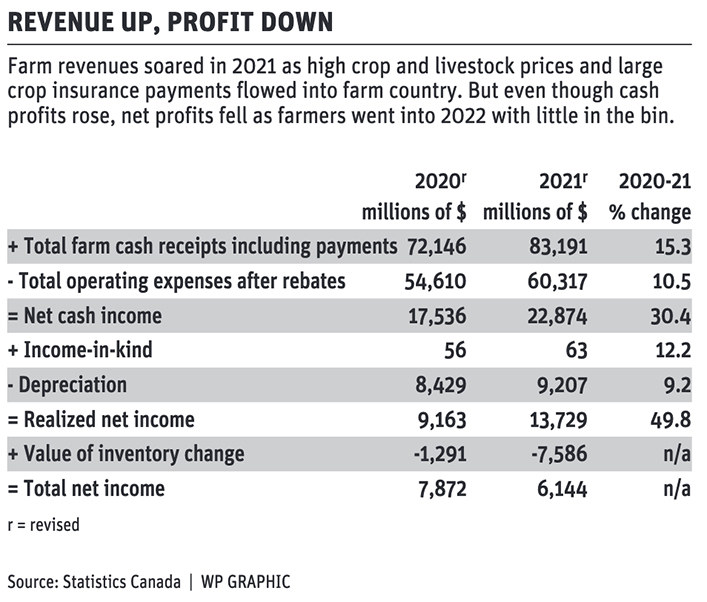
“In my area, where we had half a crop, our revenue was about the same.”
Some farmers went into 2022 with no crops left to sell, living off sales from a high-priced, drought-reduced 2021 crop and praying for better production in 2022’s growing season. Crop and livestock production today is less vulnerable to weather shocks than in the past, allowing most farmers to harvest something even in a bad year like many experienced in 2021.
Input prices soared in 2021, sucking away much of the potential profit from crop sales. Fertilizer costs rose 29.3 percent, totalling $7.3 billion. Livestock producers faced high feed prices, with commercial feed jumping 23 percent to $9.6 billion.
Those high input prices carried on into 2022, something farmers are seeing as they tally up their calendar year earnings today.
“I think we’re going to have huge cash receipts, but I think you will see another decrease in profit because our inputs are higher yet,” said Boxall.
He said the high input prices were hard to cover this year, but he worries what happens if crop and livestock prices fall.
“The price never comes down with everything else,” he said.







